A strong online presence is crucial for businesses. One platform that continues to be a powerhouse in the social media landscape is Facebook. With over 2.8 billion monthly active users, maintaining an effective Facebook presence is essential for reaching and engaging your target audience. In this blog post, we’ll delve into the concept of a “Facebook Page Checkup” – a comprehensive strategy to ensure your Facebook Page is optimized for success.
Facebook Page Checkup
Step 1: Assess Your Profile Information
The first step in a Facebook Page Checkup is to review and update your profile information. Make sure your profile picture and cover photo are visually appealing and representative of your brand. Double-check your business name, contact information, and business hours. Ensure that your “About” section is filled out with concise and compelling details about your business.
Step 2: Content Audit
Evaluate the content on your Facebook Page to ensure it aligns with your brand and resonates with your target audience. Look for consistency in tone, messaging, and visual elements. Remove any outdated or irrelevant posts, and consider creating a content calendar to plan and schedule future posts. High-quality, engaging content is key to maintaining an active and vibrant Facebook presence.
Types of Content
- Evergreen: Evergreen content is timeless, educational, and valuable. It may not be newsworthy, but it will be relevant even a year later.
- Trending: Trending content provides short-term engagement, but within a day, the interaction with your post will drop off.
- Original: Original content establishes your practice as an authority in your niche. Your content is usually a combination of evergreen or trending topics directly related to your services. Original content helps cultivate real relationships with your patients and give them reasons to connect and interact with you between office visits.
Step 3: Engagement Analysis
Assessing your engagement metrics is vital to understanding how well your content is performing. Analyze likes, comments, and shares on your posts, and identify trends in engagement over time. Respond promptly to comments and messages to foster a sense of community and build trust with your audience. Utilize Facebook Insights to gain valuable data on your audience demographics, peak engagement times, and popular content.
Step 4: Evaluate Page Responsiveness
Page responsiveness is a critical aspect of customer service on Facebook. Ensure that your response time to messages is prompt, and consider setting up automated responses for common inquiries. A responsive and attentive approach to customer interactions can enhance your reputation and build positive relationships with your audience.
Step 5: Review Page Settings
Regularly reviewing and updating your page settings is essential for security and functionality. Check privacy settings, page roles, and notification preferences to ensure they align with your business goals. Keep your page information up to date, including any changes to business locations, services, or contact details.
Step 6: Utilize Facebook Tools and Features
Explore and leverage Facebook’s various tools and features to enhance your page.
Facebook Ads
An ad is an ideal way to share content you don’t want to display it on your profile page. Facebook ads offer a lot of flexibility with setting your budget, targeting, and duration of the ad. Featuring something specific, such as a new patient special or a new service, is the best way to maximize your Facebook advertising. Ads should send traffic to a targeted web page, not the home page of your website. You will need to coordinate updating your website with a Facebook ad campaign.
Facebook Events
Creating an event is an excellent way to boost your organic reach, and it’s free. If you create an event on Facebook and invite fans, patients, and clients, you’ll get exposed to your audience’s network as well. When people RSVP to your event, their friends will receive notifications that one of their friends is interested in an event. As the event draws closer, these same friends will receive notifications of the upcoming event.
Regular Facebook Posts
The three types of content you should share on Facebook are evergreen, trending, and original. The exact proportion of each is debatable, but we recommend sharing mostly evergreen content from your blog about your practice or firm. Your evergreen content can feature patient testimonials, practice hours, holiday closures and service. Add trending content once a month.
Video
Over the last couple of years, Facebook has shown a preference for video posts over pictures and articles. The reason is twofold:
- We already know Facebook monitors engagement and genuine interaction. Live videos get up to 6 times more comments and discussion than a pre-made video.
- Sharing Live videos signals that you’re an active participant on the platform, and you provide value to your user base.
Groups
Many practices create private groups on Facebook, where they invite patients and members of their community to join. Group members get notifications about recent posts and comments (especially if they are friends with other members in the group). A group is an excellent way to ensure a core segment of your audience sees your content.
Encourage Your Clients to Write Facebook Reviews
While a handful of customers will write a review out of habit, many do not. Invite each person who uses your services to leave a review on Facebook. For example, have your front desk staff ask clients to leave a review before they leave. You can also send out follow-up emails to people you have a long-standing relationship with. Their loyalty and respect for your practice will shine through any reviews they leave you.
Respond to all reviews, both positive and negative.
Negative reviews are never fun, but 30% of consumers assume online reviews are fake if they are all positive. So don’t worry. It’s normal to get a bad review. Many people only respond to positive reviews, but it’s crucial to respond to both positive and negative reviews of your practice.
Resolve negative reviews
Responding to a negative review proves that you offer great customer service. Maybe the reviewer’s circumstances were not ideal, but show future patients that you care by responding in a genuine and timely manner.
When you respond to a negative review, it also helps you learn more about what someone was thinking when they left the review. This can become a learning experience that can benefit your overall practice and prevent future negative reviews.
Refresh Your Facebook Habits
As a local business owner providing a valuable service, this updated Facebook algorithm may benefit and work to sharpen your message. Pages that don’t provide value will be silenced to make room for people who make the platform a better place. Position your practice to be engaging with original content and video on Facebook.



